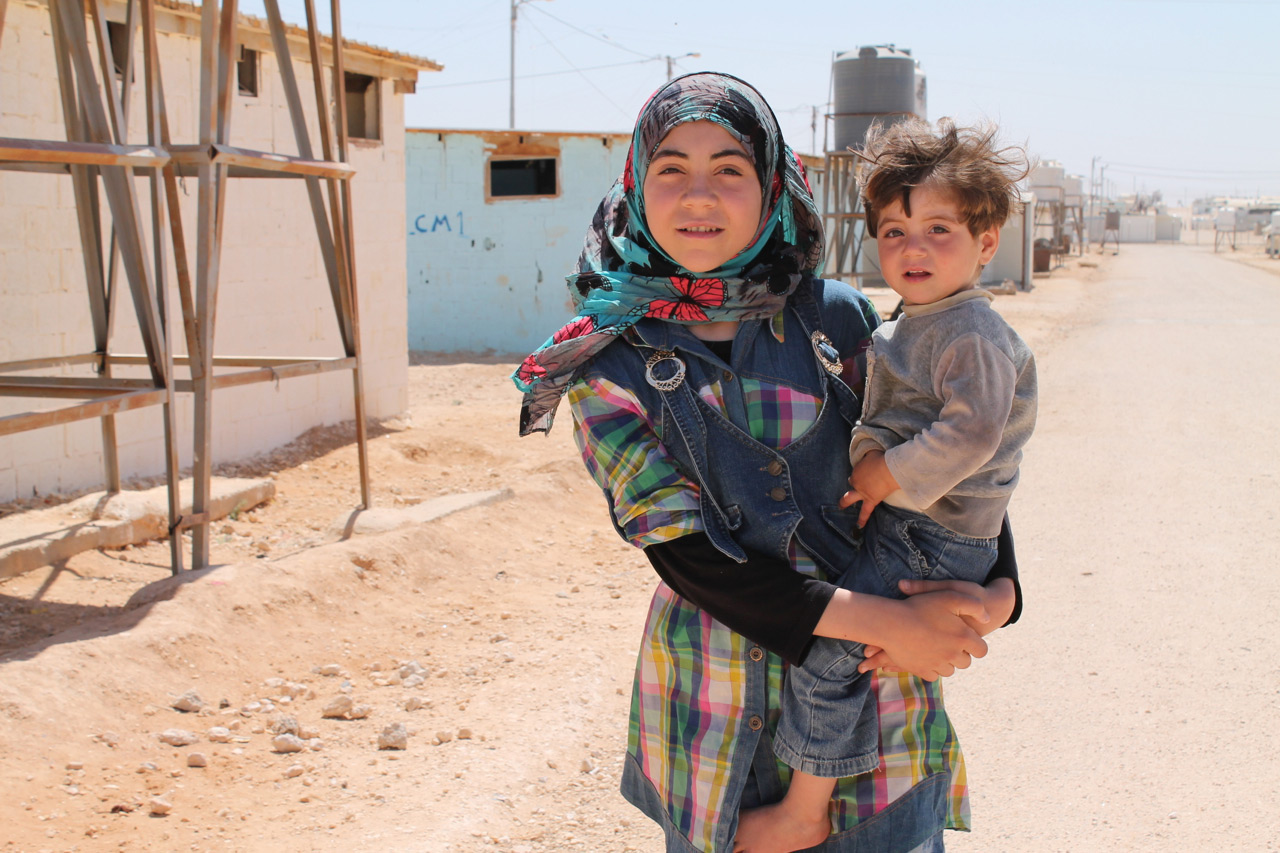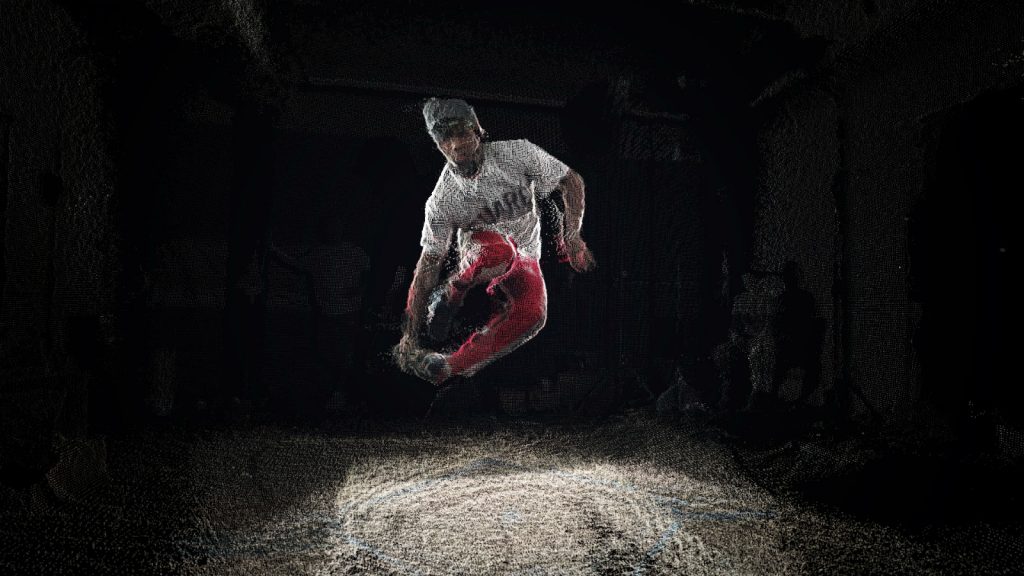The Virtual Reality Works of United Nations Creative Director, Gabo Arora
Immersive shorts and a dedicated app from a filmmaker holding an uncommon position

One might not be aware of the fact that the United Nations has a Creative Director. And yet, Gabo Arora, the first person to hold such a title, is doing everything in his power to change that. From immersive, film-festival quality content to a dedicated app employing virtual reality functionality, Arora’s contributions have already made a creative impact—and a financial one, as well. Arora has been working with the UN (as a senior policy advisor) for over three years now, and has held the title of Creative Director since January 2015. The UNVR app debuted this September, but some of the content within has been making the festival rounds since 2015. The UN has some pretty hefty talent among their ranks, including dozens of headline-catching celebrity ambassadors. Arora isn’t attempting to disrupt their work; rather, he’s aiming to change the way all of the stories coming from the UN are told.
Yesterday, Arora aided in the premiere of another filmic work, “Home,” to guests at the UN. It’s another touching, personal documentary—this time directed by David O Hana and Charlotte Cans. This is the first film ever to feature a sitting UN Secretary-General. In the film, Ban Ki-moon greets people around the world, spreading a message of hope. It’s another idiosyncratic, human tale in a roster of works that calls to mind Brandon Stanton’s “Humans of New York.” (Arora, in fact, produced Stanton’s UN tour.) Arora, first and foremost, is a filmmaker. “Home,” which he advised on, makes that evident, as do his directorial works. But as he explains to CH, the United Nations VR division is unlike anything else on the planet: “This is a nexus of Hollywood, technology and diplomacy, perhaps the only one.”

What comprises the role of first-ever Creative Director at the United Nations? “When I was approached with this, they really wanted me to oversee all content,” Arora says. Through his own work he “sets the tone, as a model,” he says. “But it is hard, as I do not create all of the content. I advise on a lot of it. I give notes and advice, but the initial system also came through me.” Arora casts a cohesion across the many outlets, both creatively and technically. Regarding the former, it’s about uniting cinematic storytelling, art and advocacy. For the latter, it’s calling upon “the relationships that we’ve formed in making award-winning content with new technology.” With this, he’s become much of a fixer. Access to the worlds of film and tech allow his division to be kept ahead of developments in both.

A primary task underlying all his work, however, is accessing empathy. With his first film for the UNVR platform, Clouds Over Sidra, Arora partnered with filmmaker Chris Milk to co-direct. Unsurprisingly, Milk delivered an empowered TED Talk on how virtual reality can create the ultimate empathy machine. Arora sought to make these lessons tangible, and he believes he did so by way of the content. “These are very people-focused,” he says. “We go into the lives of humans. We then twist it at the right moment to let people realize these are vulnerable and suffering characters. If you just focus on sensational and horrible narratives, even in the world of VR, you won’t feel like it is you. The ordinary, human moments convey a transcendence.”
That said, Arora admits there isn’t really a tool to measure empathy. “We do use these films to measure impact. They have been played in face-to-face fundraisers with UNICEF—which has doubled donations. We statistically have proof of that. And we are also using them on the ground—the Gaza film, for instance, was shown in the streets of Tel Aviv to bring Israelis into greater awareness. These are the ways we can show it’s shaping people’s behavior differently. That’s what we are calling empathy. That, and the fact that 40% to 60% of the people who watch ‘Clouds Over Sidra‘ cry.” It is a particularly beautiful film, and might very well be the first time most people see an image of a refugee camp—let alone step inside of it with a 12-year-old narrator.

The world of virtual reality storytelling is still very new and ever-changing—and most people don’t have the technology required to experience it to the fullest, yet. Arora feels an obligation to push the medium as much as the message. “I knew that VR would be the medium that would very much shape what it means to be human—and even address human consciousness. I almost felt that if there wasn’t a type of storytelling that can engage you, this [program] would all be a real loss.” That said, he is making films that have premiered at Sundance and Tribeca Film Festival and screened at last week’s Toronto International Film Festival. They hold up on their own. But, he adds, “We honed the craft of filmmaking for this medium.” Arora actually studied film at NYU for his undergraduate degree. He cites the festivals as more than just affirmation of what he’s made. “They are means of feedback and collaboration. It keeps us sharp so that we are aware of all innovative storytelling techniques. In my future films, I can’t keep making ‘Clouds Over Sidra.’ There’s something in that circuit that keeps you from getting formulaic.”
We show people crying. We single out political states. We address religion. Much of this has been considered taboo.
There is a tremendous reliability upon formula for most NGO films. Here, Arora does employ non-actors. “They are regular people who we want to make feel like heroes,” he says. But more than just through the VR platform, he sought to connect viewer and subject directly. Traditionally, “You either see stories like this in the news and its sensational or you see them in an NGO video and it feels like a PSA or commercial and there’s a level or removal.” Here, he has broken rules that the UN tended to uphold. “We show people crying. We single out political states. We address religion. Much of this has been considered taboo,” says Arora. The works’ critical reception and continued impact allows him to buck the establishment with each new project.

Festivals aside, all of Arora’s VR work has one dedicated distribution platform: the UNVR app. His motivation is clear, “I think it’s very beautiful to have all the films in one place. You can’t control the brand identity without having it in one place. We needed to have a place where everything can go.” In addition to the four films presently on the app, and the fifth arriving shortly, there are at least two more scheduled for release by year’s end. The app carries a secondary meaning though. “Most people do not realize they have a VR machine in their pocket,” he explains. “With our app, they truly understand that they can just go out and get a Cardboard and access this world.”

Arora has two epic plans for the app, to be unleashed in the near future. “We are experimenting with live VR and talks with refugees by way of a live full-body Skype,” he begins. Second, he says, “as smartphone penetration increases—because we have offices in 135 countries—we want to develop storytelling kits with local offices and have them use the app to get their work shown in all 135 countries. It’s a universal way that our system can engage with everyone.” While both of these features add an extraordinary level of democratization to the UNVR platform, Arora’s work acts as an inspirational backbone to it all. And if the film festival accolades and actionable, financial push from the works haven’t acted as impetus enough to watch them right now, we remind you that they’re free and unlike anything else one has seen before.

Download the UNVR app online for Oculus, iOS and Google Play—all of which are free. With an Apple or Android device, you can watch Arora’s films for free in 360 degree 2D or in 3D with the aid of a VR unit like Samsung Gear.
“Clouds Over Sidra” behind the scenes portrait courtesy of UNICEF Jordan, photo by Toby Fricker, Gabo Arora portrait by Ethan Scott, all other images courtesy of the UNVR












